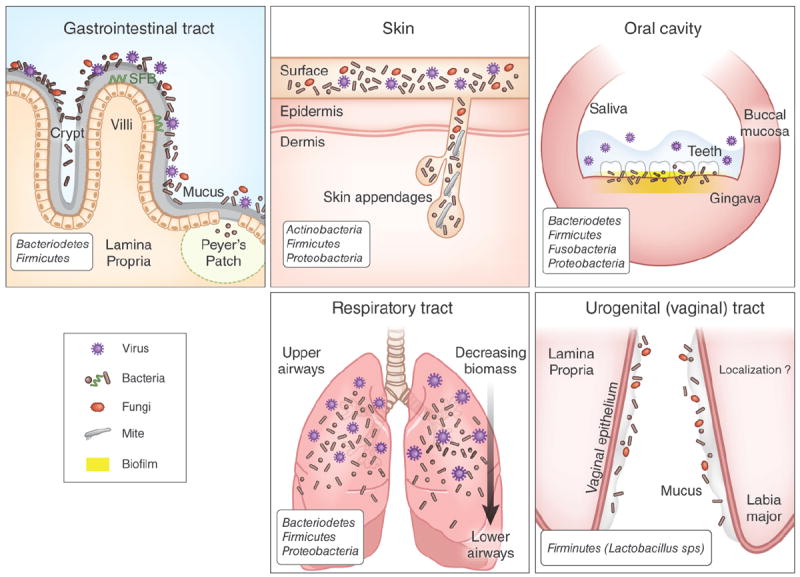Figure 1.

Tissue-specific modes of host-commensal interactions at distinct barrier sites. The gastrointestinal tract has the most abundant commensal niches in the body. A thick mucus layer separates the intestinal epithelium from resident microbes. Certain commensal species such as segmented filamentous bacteria (SFB) can penetrate the intestinal mucosal layer and reside in intimate contact with epithelial cells and in Peyer’s patches. By virtue of their localization, these species are uniquely poised to influence immune functions. Commensal microorganisms reside on the surface of the skin and appendages, such as hair follicles, sebaceous glands and sweat glands. These appendages may be critical sites of interactions between immune cells and commensals in the skin. The oral cavity contains several microenvironments that house commensal microbes including buccal mucosa, saliva, teeth and gingiva. Individual teeth house bacteria both above and below the gumline, that have been shown to modulate immunity in the surrounding gingiva; additionally, commensal bacteria constitutively form biofilm at this tissue site. In the respiratory tract, the composition of commensals is conserved across different geographical locations but the density of commensals is greatest in the upper airways and is less in the lower airways. The vaginal mucosa is dominantly colonized by Lactobacillus spp., but little is known about the precise localization of commensals in this niche and how fluctuations associated with sexual activity, menstrual cycle and pregnancy impact the microbiota in this site.
